CHEMICAL IDENTIFICATION
-
RTECS NUMBER :
-
SZ7100000
-
CHEMICAL NAME :
-
Phosphonic acid, (2-chloroethyl)-
-
CAS REGISTRY NUMBER :
-
16672-87-0
-
BEILSTEIN REFERENCE NO. :
-
1751208
-
LAST UPDATED :
-
199701
-
DATA ITEMS CITED :
-
12
-
MOLECULAR FORMULA :
-
C2-H6-Cl-O3-P
-
MOLECULAR WEIGHT :
-
144.50
-
WISWESSER LINE NOTATION :
-
QPQO&2G
HEALTH HAZARD DATA
ACUTE TOXICITY DATA
-
TYPE OF TEST :
-
LD50 - Lethal dose, 50 percent kill
-
ROUTE OF EXPOSURE :
-
Oral
-
SPECIES OBSERVED :
-
Rodent - rat
-
DOSE/DURATION :
-
3400 mg/kg
-
TOXIC EFFECTS :
-
Biochemical - Enzyme inhibition, induction, or change in blood or tissue levels - other Enzymes
-
REFERENCE :
-
ZKMAAX Zhurnal Eksperimental'noi i Klinicheskoi Meditsiny. Journal of Experimental and Clinical Medicine. (V/O Mezhdunarodnaya Kniga, 113095 Moscow, USSR) V.2- 1962- Volume(issue)/page/year: 20,274,1980
-
TYPE OF TEST :
-
LC50 - Lethal concentration, 50 percent kill
-
ROUTE OF EXPOSURE :
-
Inhalation
-
SPECIES OBSERVED :
-
Rodent - rat
-
DOSE/DURATION :
-
90 mg/m3/4H
-
TOXIC EFFECTS :
-
Details of toxic effects not reported other than lethal dose value
-
REFERENCE :
-
85JCAE "Prehled Prumyslove Toxikologie; Organicke Latky," Marhold, J., Prague, Czechoslovakia, Avicenum, 1986 Volume(issue)/page/year: -,1120,1986
-
TYPE OF TEST :
-
LD50 - Lethal dose, 50 percent kill
-
ROUTE OF EXPOSURE :
-
Oral
-
SPECIES OBSERVED :
-
Rodent - mouse
-
DOSE/DURATION :
-
2850 mg/kg
-
TOXIC EFFECTS :
-
Details of toxic effects not reported other than lethal dose value
-
REFERENCE :
-
PHARAT Pharmazie. (VEB Verlag Volk und Gesundheit, Neue Gruenstr. 18, Berlin DDR-1020, Ger. Dem. Rep.) V.1- 1946- Volume(issue)/page/year: 32,181,1977
-
TYPE OF TEST :
-
LD50 - Lethal dose, 50 percent kill
-
ROUTE OF EXPOSURE :
-
Intraperitoneal
-
SPECIES OBSERVED :
-
Rodent - mouse
-
DOSE/DURATION :
-
>1500 mg/kg
-
TOXIC EFFECTS :
-
Details of toxic effects not reported other than lethal dose value
-
REFERENCE :
-
JAFCAU Journal of Agricultural and Food Chemistry. (American Chemical Soc., Distribution Office Dept. 223, POB 57136, West End Stn., Washington, DC 20037) V.1- 1953- Volume(issue)/page/year: 39,380,1991
-
TYPE OF TEST :
-
LD50 - Lethal dose, 50 percent kill
-
ROUTE OF EXPOSURE :
-
Oral
-
SPECIES OBSERVED :
-
Rodent - rabbit
-
DOSE/DURATION :
-
5 gm/kg
-
TOXIC EFFECTS :
-
Behavioral - somnolence (general depressed activity) Behavioral - muscle contraction or spasticity Lungs, Thorax, or Respiration - other changes
-
REFERENCE :
-
GISAAA Gigiena i Sanitariya. For English translation, see HYSAAV. (V/O Mezhdunarodnaya Kniga, 113095 Moscow, USSR) V.1- 1936- Volume(issue)/page/year: 48(8),79,1983
-
TYPE OF TEST :
-
LD50 - Lethal dose, 50 percent kill
-
ROUTE OF EXPOSURE :
-
Administration onto the skin
-
SPECIES OBSERVED :
-
Rodent - rabbit
-
DOSE/DURATION :
-
5730 mg/kg
-
TOXIC EFFECTS :
-
Details of toxic effects not reported other than lethal dose value
-
REFERENCE :
-
85DPAN "Wirksubstanzen der Pflanzenschutz und Schadlingsbekampfungsmittel," Perkow, W., Berlin, Verlag Paul Parey, 1971-1976 Volume(issue)/page/year: -,-,1971/1976
-
TYPE OF TEST :
-
LD50 - Lethal dose, 50 percent kill
-
ROUTE OF EXPOSURE :
-
Oral
-
SPECIES OBSERVED :
-
Rodent - guinea pig
-
DOSE/DURATION :
-
4200 mg/kg
-
TOXIC EFFECTS :
-
Behavioral - somnolence (general depressed activity) Behavioral - muscle contraction or spasticity Lungs, Thorax, or Respiration - other changes
-
REFERENCE :
-
GISAAA Gigiena i Sanitariya. For English translation, see HYSAAV. (V/O Mezhdunarodnaya Kniga, 113095 Moscow, USSR) V.1- 1936- Volume(issue)/page/year: 48(8),79,1983
-
TYPE OF TEST :
-
LD50 - Lethal dose, 50 percent kill
-
ROUTE OF EXPOSURE :
-
Oral
-
SPECIES OBSERVED :
-
Bird - quail
-
DOSE/DURATION :
-
1072 mg/kg
-
TOXIC EFFECTS :
-
Details of toxic effects not reported other than lethal dose value
-
REFERENCE :
-
PEMNDP Pesticide Manual. (The British Crop Protection Council, 20 Bridport Rd., Thornton Heath CR4 7QG, UK) V.1- 1968- Volume(issue)/page/year: 9,341,1991
-
TYPE OF TEST :
-
LD50 - Lethal dose, 50 percent kill
-
ROUTE OF EXPOSURE :
-
Unreported
-
SPECIES OBSERVED :
-
Mammal - species unspecified
-
DOSE/DURATION :
-
4200 mg/kg
-
TOXIC EFFECTS :
-
Details of toxic effects not reported other than lethal dose value
-
REFERENCE :
-
30ZDA9 "Chemistry of Pesticides," Melnikov, N.N., New York, Springer-Verlag New York, Inc., 1971 Volume(issue)/page/year: -,384,1971 ** OTHER MULTIPLE DOSE TOXICITY DATA **
-
TYPE OF TEST :
-
TDLo - Lowest published toxic dose
-
ROUTE OF EXPOSURE :
-
Oral
-
SPECIES OBSERVED :
-
Rodent - rat
-
DOSE/DURATION :
-
70 gm/kg/8W-I
-
TOXIC EFFECTS :
-
Brain and Coverings - recordings from specific areas of CNS Biochemical - Enzyme inhibition, induction, or change in blood or tissue levels - true cholinesterase Related to Chronic Data - death
-
REFERENCE :
-
GISAAA Gigiena i Sanitariya. For English translation, see HYSAAV. (V/O Mezhdunarodnaya Kniga, 113095 Moscow, USSR) V.1- 1936- Volume(issue)/page/year: 48(8),79,1983 *** U.S. STANDARDS AND REGULATIONS *** EPA FIFRA 1988 PESTICIDE SUBJECT TO REGISTRATION OR RE-REGISTRATION FEREAC Federal Register. (U.S. Government Printing Office, Supt. of Documents, Washington, DC 20402) V.1- 1936- Volume(issue)/page/year: 54,7740,1989
|
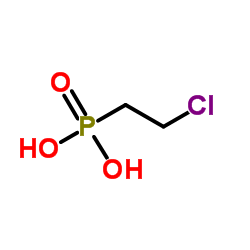






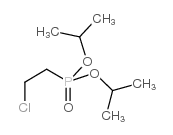 CAS#:25131-74-2
CAS#:25131-74-2![1-[butoxy(2-chloroethyl)phosphoryl]oxybutane Structure](https://image.chemsrc.com/caspic/400/20135-59-5.png) CAS#:20135-59-5
CAS#:20135-59-5 CAS#:10419-79-1
CAS#:10419-79-1![1-[2-chloroethyl(propoxy)phosphoryl]oxypropane Structure](https://image.chemsrc.com/caspic/289/88093-47-4.png) CAS#:88093-47-4
CAS#:88093-47-4![[2-chloroethyl(trimethylsilyloxy)phosphoryl]oxy-trimethylsilane Structure](https://image.chemsrc.com/caspic/470/67344-36-9.png) CAS#:67344-36-9
CAS#:67344-36-9 CAS#:26119-41-5
CAS#:26119-41-5 CAS#:6294-34-4
CAS#:6294-34-4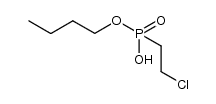 CAS#:1118607-72-9
CAS#:1118607-72-9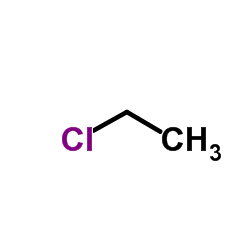 CAS#:75-00-3
CAS#:75-00-3 CAS#:75-01-4
CAS#:75-01-4![Phosphonic acid,[2-(methylamino)ethyl]- (8CI,9CI) structure](https://image.chemsrc.com/caspic/194/14596-55-5.png) CAS#:14596-55-5
CAS#:14596-55-5 CAS#:54509-73-8
CAS#:54509-73-8 CAS#:1746-03-8
CAS#:1746-03-8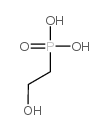 CAS#:22987-21-9
CAS#:22987-21-9 CAS#:2041-14-7
CAS#:2041-14-7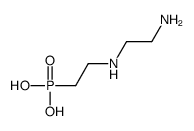 CAS#:112013-36-2
CAS#:112013-36-2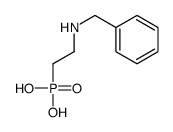 CAS#:72696-92-5
CAS#:72696-92-5 CAS#:7582-45-8
CAS#:7582-45-8 CAS#:55215-15-1
CAS#:55215-15-1
